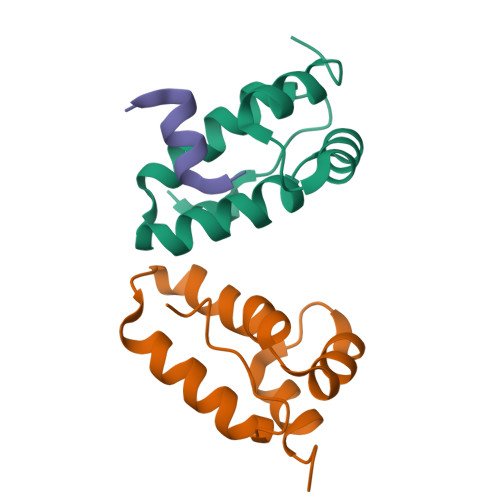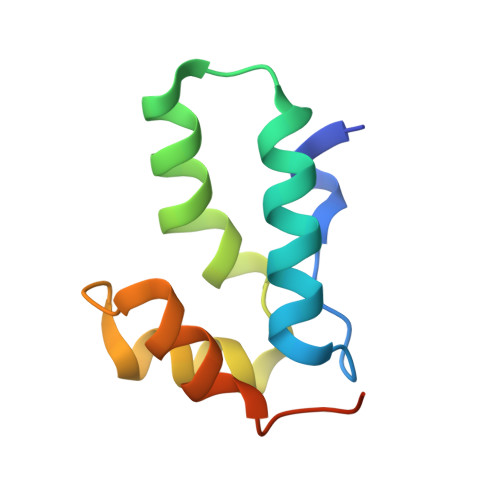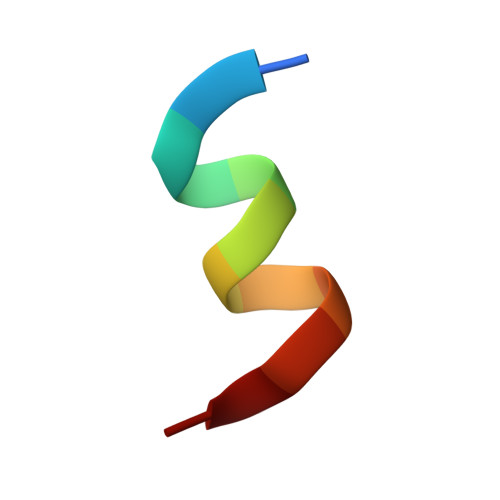Residues in the HIV-1 Capsid Assembly Inhibitor Binding Site Are Essential for Maintaining the Assembly-competent Quaternary Structure of the Capsid Protein.
Bartonova, V., Igonet, S., Sticht, J., Glass, B., Habermann, A., Vaney, M.C., Sehr, P., Lewis, J., Rey, F.A., Krausslich, H.G.(2008) J Biological Chem 283: 32024-32033
- PubMed: 18772135
- DOI: https://doi.org/10.1074/jbc.M804230200
- Primary Citation of Related Structures:
3DPH, 3DS0, 3DS1, 3DS2, 3DS3, 3DS4, 3DS5, 3DTJ - PubMed Abstract:
Morphogenesis of infectious HIV-1 involves budding of immature virions followed by proteolytic disassembly of the Gag protein shell and subsequent assembly of processed capsid proteins (CA) into the mature HIV-1 core. The dimeric interface between C-terminal domains of CA (C-CA) has been shown to be important for both immature and mature assemblies. We previously reported a CA-binding peptide (CAI) that blocks both assembly steps in vitro. The three-dimensional structure of the C-CA/CAI complex revealed an allosteric effect of CAI that alters the C-CA dimer interface. Based on this structure, we now investigated the phenotypes of mutations in the binding pocket. CA variants carrying mutations Y169A, L211A, or L211S had a reduced affinity for CAI and were unable to form mature-like particles in vitro. These mutations also blocked morphological conversion to mature virions in tissue culture and abolished infectivity. X-ray crystallographic analyses of the variant C-CA domains revealed that these alterations induced the same allosteric change at the dimer interface observed in the C-CA/CAI complex. These results point to a role of key interactions between conserved amino acids in the CAI binding pocket of C-CA in maintaining the correct conformation necessary for mature core assembly.
Organizational Affiliation:
Department of Virology, Universitätsklinikum Heidelberg, Im Neuenheimer Feld 324, 69120 Heidelberg, Germany.



















